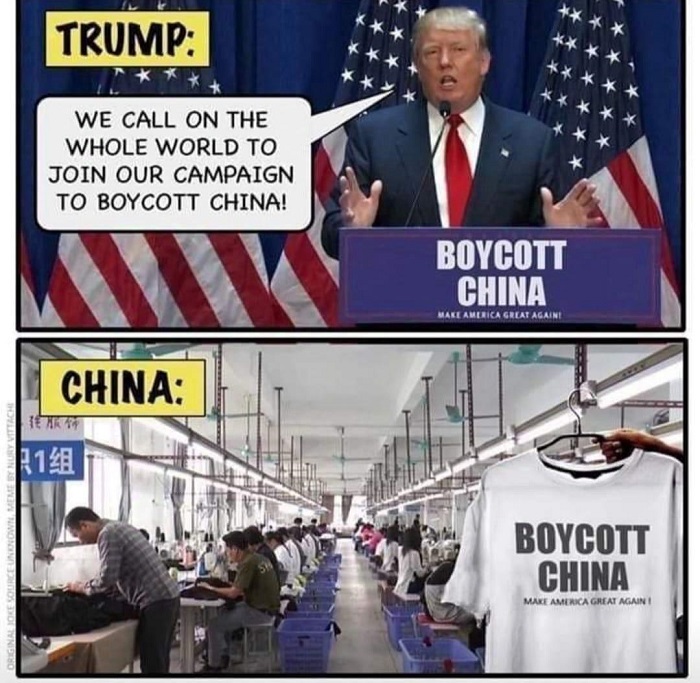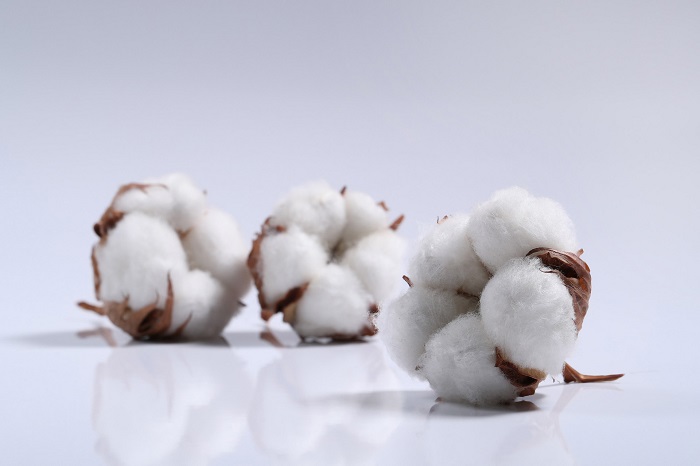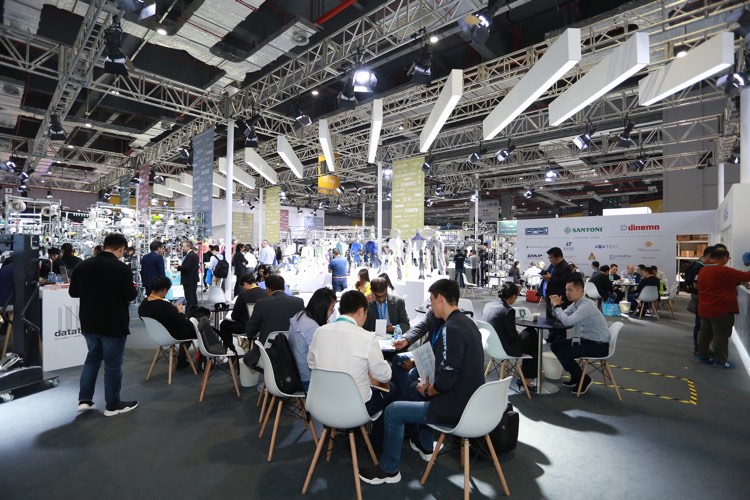FW
Gütermann and American & Efird have decided to merge. The two companies are the world’s most renowned sewing thread manufacturers. By merging, the two companies will meet the challenges of globalisation and the changing aspects of customer requirements. In addition it is expected that through merging the competencies and the knowhow of the companies will lead to significant synergies and a more apt positioning on the world markets.
Germany-based Gütermann is celebrating its 150th year of existence. It is a leading European manufacturer and distributor of quality sewing thread and accessories for private customers as well as for manufacturing of clothing, shoes, leatherwork, protection wear, home textiles and the automotive industry (airbags, seat covers, etc.) with a focus on European markets. The brand has manufacturing sites in Spain, Mexico, and India.
A&E was founded in 1891 and is by far the largest American sewing thread manufacturer, number two worldwide. The product ranges apply to similar sectors as Gütermann, but go also to medical and other technical applications. A&E has manufacturing sites in over 20 countries and sells mostly in America and Asia. The group has around 10,000 collaborators and is known for sustainability and social responsibility.
https://www.guetermann.com/, www.amefird.com/
After a Northern Ireland shopper claimed to have found a message from Chinese dissident inside their trousers purchased at the Primark store, the company had to clear its stand against allegation that it sourced clothes from forced labour camps or prisons in China. Amnesty International said that a local woman handed over a secret note hidden inside a pair of trousers, supposedly written by a Chinese worker held in a forced labour camp.
Primark has said that it would investigate her claims, however, there is no evidence that any of their clothes were made from slave labour camps in China.
According to Primark, the three-quarter crop trousers, that the woman purchased were last ordered by Primark in early 2009 and were last sold in Northern Ireland in October 2009. They found it strange that the matter was brought to light now, given that the trousers were on sale four years ago.
Nine inspections of the suppliers have been carried out by Primark's ethical standards team since 2009. And the team did not find any prison or other forced labour of any kind during these inspections. It was the first UK retailer to sign the accord on fire and building safety in Bangladesh in order to work collaboratively with other brands and stakeholders in the industry to bring about sustainable long-term change in the country.
At the recent Tokyo Girls Collection 2014, held in Koriyama, Fukushima Prefecture, audience was mesmerized to see model Ashley gliding down the ramp in a bridal dress with trail made from Fairy Feather silk, weighing just 600 grams. Fairy Feather silk is the thinnest in the world and was developed locally by Saiei Orimono, based in Kawamata, Fukushima Prefecture.
This innovative silk has a distinct supple and light transparency to it lending a rippling effect and shimmer to the ensemble. The town of Kawamata has long been one of Japan’s renowned silk production centers. It is said that Kawamata silk has been in production for at least 1,300 years. In the Meiji Era (1868-1912) local manufacturers began mass-producing of silk, boosting the industry’s status. Saiei Orimono, which was founded in 1952, began developing ultrathin silk fabric in 2009.
Of late, silk production in Kawamata is hit hard by cheaper overseas products dumped in the market. The volume of production has decreased to a dismal 10 per cent compared to the buoyant times, it had witnessed in the past.
www.saiei-orimono.com
Zimbabwe is set to benefit from the €11 million funds set up by the European Union to revive its clothing and textile industry. Under the Cotton to Clothing Strategy, the European Development Fund has made available several resources to African countries. Zimbabwe is in the second and last stage for considerations which is expected to be finalised and polished before being launched on September 4, 2014. Zimbabwe held a second consultative workshop on Cotton to Clothing Strategy for the country. This step is expected to assist revival of the entire cotton value chain. Additionally, the EU has also launched a new program called Support for the Consolidation of the Action Framework under the EU-Africa Partnership on cotton.
Zimbabwe was also set to benefit from the Common Market for Eastern and Southern Africa (Comesa) €4.8 million and another €1 million allocation as a part of the regional economic integration efforts to support Zimbabwe. The textile and clothing subsectors were contributing two per cent to the country’s gross domestic product from 5 per cent in the 90’s. At its peak, the industry used to employ over 35, 000 workers.
South Africa will soon have a new sustainable textile and apparel cluster to supply more traceable products. The initiative is backed by a five-year production plan to leapfrog the local industry’s competitiveness in sustainable textile and apparel manufacturing. It will supply local and international customers with fully traceable sustainable apparel and household textile products.
One of the main aims is to support local industry, both by developing production capacity and using local raw materials -- starting with cotton and then broadening its scope to include all natural and synthetic fibers. There are also plans to establish a National Sector Body to represent the entire value chain from fiber to end-product, with sector leaders working closely with government to map out the future development of the industry and address mutual issues of national concern.
Funding for the initiative is through the Competitiveness Improvement Program, which, in turn, is part of the overall Clothing and Textiles Competitiveness Program aimed at stabilising employment and improving overall competitiveness in clothing, textile, footwear, leather and leather goods manufacturing. The textile and clothing industry in South Africa offers the full range of services, from natural and synthetic fiber production to non-wovens, spinning, weaving, tufting, knitting, dyeing and finishing.
Lenzing has once again joined a group of companies which have been accepted for listing in the VONIX index (VBV Austrian Sustainability Index) for a period of one year. The company has been on the list for eight years already and has been given a good rating again this year.
Since 2005, around 60 publicly traded Austrian companies are analysed each year on the basis of approximately 100 environmental and social criteria. In the 2013-14 index year, the performance of the VÖNIX index was reflected in a 10.6 per cent gain in value, thus 3.6 percentage points lower than the ATX Prime.
A total of 22 stocks (alphabetically listed) will be included in the VONIX 2014-’15 index. The Lenzing Group is a market leader with headquarters in Austria, production sites in all major markets as well as a worldwide network of sales and marketing offices. It supplies the global textile and nonwovens industry with high-quality man-made cellulose fibers. The portfolio ranges from dissolving pulp, standard and specialty cellulose fibers to engineering services.
With 75 years of experience in fiber production, Lenzing combines the manufacturing of all three manmade cellulose fiber generations on a large industrial scale under one roof – from the classic viscose to modal and lyocell fibers.
www.lenzing.com/en/concern/home.html
Schoeller has introduced its latest fabric collection for summer 2016 that features embossed structures on supple soft-shells and jeans prints on functional cotton fabrics. Embossed as an oval red honeycomb structure on smooth outer fabrics, or as an irregular, greenish wood-bark look or in a neoprene look with grass-green squares for trims and inserts, these fabrics impress with their breathability, extreme durability, water and dirt repelling properties and ease of care.
Schoeller is a pioneer in the development of functional, sturdy, hard-wearing stretch fabrics. The range of abrasion-resistant, permanently elastic dry skin double fabrics extends from ultra light soft shells to dense, compact versions in intensive, sporty colors or sophisticated classics. On the inner side of the jacket or pants fabrics, a functional layer ensures speedy moisture transport. Additional abrasion protection in exposed areas is provided by the structured, elastic rip-stops.
The Cool Fabrics from Schoeller feel tangibly cooler and protect the wearer from overheating. The functional micro-coating on the reverse actively balances out body temperature, generating a pleasantly cool comfort-climate which, in turn, positively affects performance capacity.
The light wool blend fabrics in vibrant shades of blue, green or red also offer shelter from a light season rain. Here the addition of NanoSphere technology lends permanent, reliable water and dirt repellence.
www.schoeller-textiles.com/
Year 2014-'15 global cotton mill use is forecast at 112.3 million bales, two per cent above the previous season. Mill use in China is expected to rebound in 2014-’15 to 37 million bales, up from an estimated 35.5 million bales this season and the highest in three years.
India’s consumption is projected to rise two per cent, a record, as demand for India’s textile product exports is expected to remain strong. Expansion of cotton mill use in Pakistan is also likely to continue in 2014-’15, rising three per cent above a year earlier. In addition to gains for the United States, cotton mill consumption is also projected to rise in Turkey and Bangladesh.
World cotton trade, on the other hand, will be 13 per cent below 2013-’14 and the lowest in four years, due mainly to China’s expected reduction in raw cotton imports. Imports are forecast to rise in Bangladesh, Indonesia, and Pakistan, while declines are seen for Turkey and Vietnam.
Exports are projected to decrease in 2014-’15 across major exporting countries with the exception of Brazil. For India, exports are forecast to decline 37 per cent while shipments from Australia are projected to decrease 35 per cent. Global ending stocks are forecast to reach 102.7 million bales by the end of 2014-’15.
Warwick has created the world's first textile using genetically engineered spider silk from Kraig. Warwick is a leader in engineering and development of advanced technical textiles and protective materials. Kraig Biocraft Laboratories is a developer of advanced spider silk based fibers. The Monster Silk textiles are the first of many textiles that will be created as part of Kraig’s joint development agreement with Warwick.
The first Monster Silk knits have proved that genetically engineered spider silk works well with existing manufacturing methods. The creation of these knits is a huge milestone in the progress toward making genetically engineered spider silk available for industrial and consumer applications. And these advanced materials process well on existing machinery.
Spider silk has been the subject of advanced research and development efforts for years because it has exceptional strength, elasticity and abrasion resistance as well as numerous potential technical textile applications. This fiber would have advanced medical, composite and possibly ballistic applications, among others — spider silk is said to be stronger than aramid and ten times as strong as steel.
A hybrid silk produced by transgenic silkworms is well on its way to commercialization primarily for traditional silk applications including apparel and medical applications such as sutures.
www.warwickmills.com/About-Warwick/Warwick-Mills-Legacy.aspx
Import of denim jeans into the European Union recovered in 2013, increasing 4.4 per cent in value and 8.6 per cent in volume terms, but average prices declined 3.9 per cent. European Union nations imported 494 million pairs of denim jeans in 2013. Between 2007 and 2013, imports of jeans recorded an annual growth rate of 5.3 per cent compared to the growth figure of 2.2 per cent for overall EU clothing imports.
Jeans imports declined in 2012 thanks to the fragile European economy before returning to growth last year. Turkey, Bangladesh and China together account for 62 per cent of jeans imports at 69 per cent in volume terms, followed by Pakistan, Tunisia, Morocco and Cambodia. In 2013, China was overtaken by Turkey and Bangladesh in value terms, but remained the top volume supplier at 142 million pairs.
In terms of importing countries, Germany is the most attractive European market for jeans. It is the largest importer by both value and volume and is also the market with the highest growth rate. The second most attractive market is the UK. It is followed by Spain, which has experienced strong average annual growth since 2005. The market for imported jeans in France and Italy each represents about a third of the value of Germany. Italy purchases the most expensive jeans followed by Austria, Denmark, Germany and Sweden.












